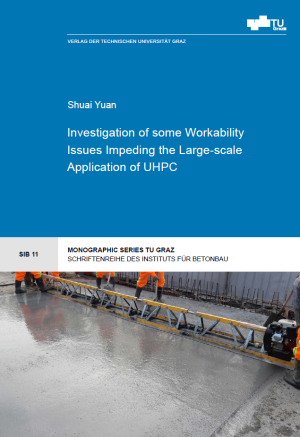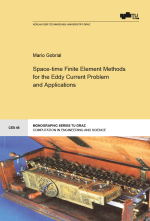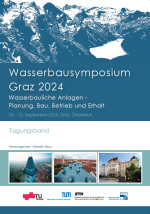Issue: paperback
ISBN: 978-3-99161-026-7
Scope: 247 pages
Language: Englisch
Release date: November 2024
Series: Monographic Series TU Graz / Schriftenreihe des Instituts Betonbau, Issue 11
€ 35.00
Ultra-high performance concrete (UHPC) has superior mechanical properties and durability aspects compared with conventional normal strength concrete and high-performance concrete. However, at present in the world, the real large-scale application of UHPC has rarely been realized. Many researchers are mainly paying attention to the mechanical properties of UHPC; while there are very few studies focusing on the workability of UHPC.
The ultra-high performance of UHPC is mainly because of the super dense microstructure, very low water content, and high powder material content. But this can also lead to incomplete hydration of the cement in concrete, little free water, and high viscosity, resulting in many problems in terms of workability.
Therefore, this doctoral dissertation mainly focuses on the workability issues of the “elephant skin” and the air bubbles in UHPC. Through experimental research and theoretical analysis, the formation mechanisms of the “elephant skin” and the air bubbles formation and de-airing mechanisms in UHPC are summarized. Accordingly, the corresponding suggestions for enhancing the surface performance and the de-airing behaviours in UHPC are proposed, so as to realize the large-scale application of UHPC under the premise of ensuring the required properties.
Ultra-high performance concrete (UHPC) has superior mechanical properties and durability aspects compared with conventional normal strength concrete and high-performance concrete. However, at present in the world, the real large-scale application of UHPC has rarely been realized. Many researchers are mainly paying attention to the mechanical properties of UHPC; while there are very few studies focusing on the workability of UHPC.
The ultra-high performance of UHPC is mainly because of the super dense microstructure, very low water content, and high powder material content. But this can also lead to incomplete hydration of the cement in concrete, little free water, and high viscosity, resulting in many problems in terms of workability.
Therefore, this doctoral dissertation mainly focuses on the workability issues of the “elephant skin” and the air bubbles in UHPC. Through experimental research and theoretical analysis, the formation mechanisms of the “elephant skin” and the air bubbles formation and de-airing mechanisms in UHPC are summarized. Accordingly, the corresponding suggestions for enhancing the surface performance and the de-airing behaviours in UHPC are proposed, so as to realize the large-scale application of UHPC under the premise of ensuring the required properties.







